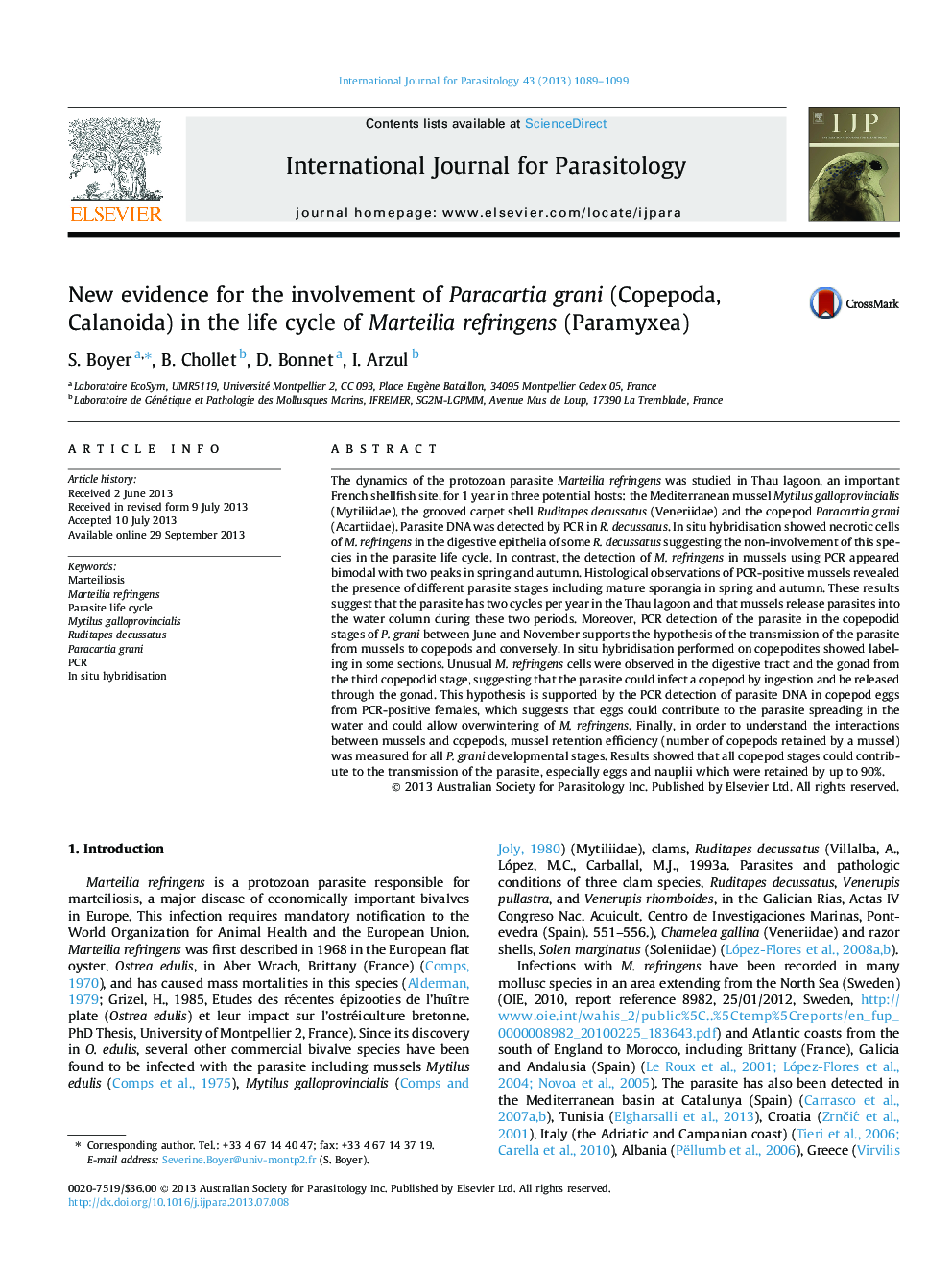| کد مقاله | کد نشریه | سال انتشار | مقاله انگلیسی | نسخه تمام متن |
|---|---|---|---|---|
| 2436115 | 1107276 | 2013 | 11 صفحه PDF | دانلود رایگان |

• Marteilia refringens was studied in bivalves: Mytilus galloprovincialis, Ruditapes decussatus and copepods Paracartia grani.
• A non-involvement of clams in the parasite life cycle is suggested.
• Mature sporangia were observed in mussels in spring and autumn.
• Unusual parasite cells were observed in the digestive tract and gonad in young and adult copepodite stages of the copepod.
• Positive PCR detections were observed in copepod eggs and all copepod developmental stages were retained by mussels.
The dynamics of the protozoan parasite Marteilia refringens was studied in Thau lagoon, an important French shellfish site, for 1 year in three potential hosts: the Mediterranean mussel Mytilus galloprovincialis (Mytiliidae), the grooved carpet shell Ruditapes decussatus (Veneriidae) and the copepod Paracartia grani (Acartiidae). Parasite DNA was detected by PCR in R. decussatus. In situ hybridisation showed necrotic cells of M. refringens in the digestive epithelia of some R. decussatus suggesting the non-involvement of this species in the parasite life cycle. In contrast, the detection of M. refringens in mussels using PCR appeared bimodal with two peaks in spring and autumn. Histological observations of PCR-positive mussels revealed the presence of different parasite stages including mature sporangia in spring and autumn. These results suggest that the parasite has two cycles per year in the Thau lagoon and that mussels release parasites into the water column during these two periods. Moreover, PCR detection of the parasite in the copepodid stages of P. grani between June and November supports the hypothesis of the transmission of the parasite from mussels to copepods and conversely. In situ hybridisation performed on copepodites showed labeling in some sections. Unusual M. refringens cells were observed in the digestive tract and the gonad from the third copepodid stage, suggesting that the parasite could infect a copepod by ingestion and be released through the gonad. This hypothesis is supported by the PCR detection of parasite DNA in copepod eggs from PCR-positive females, which suggests that eggs could contribute to the parasite spreading in the water and could allow overwintering of M. refringens. Finally, in order to understand the interactions between mussels and copepods, mussel retention efficiency (number of copepods retained by a mussel) was measured for all P. grani developmental stages. Results showed that all copepod stages could contribute to the transmission of the parasite, especially eggs and nauplii which were retained by up to 90%.
Figure optionsDownload high-quality image (113 K)Download as PowerPoint slide
Journal: International Journal for Parasitology - Volume 43, Issue 14, December 2013, Pages 1089–1099